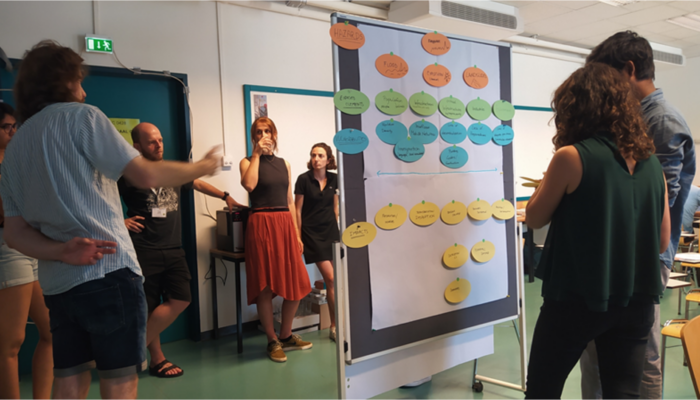
This summer the University of Vienna has hosted an inspiring summer school on multi-hazard risk management, bringing science outreach and research closer together. In this post, Till Wenzel provides some insights about the importance of face-to-face meetings to bring together multiple perspectives and better understand multi-hazard risks.
The summer school has been organized by the Vienna International School of Earth and Space Science (VISESS), with members of the EU-Horizon project PARATUS. VISESS supports young researchers throughout the entire process, from applying to a research topic, through midterm presentations, to the finalisation of their PhD. PARATUS aims to bridge the gap between multi-hazard risk analysis, practitioner knowledge, and future challenges connected to Global Change. Therefore, the summer school was a tool to successfully combine science outreach and research. This was done through presentations from partners with different backgrounds: The ENGAGE – Geomorphological Systems and Risk Research working group at the University of Vienna, the International Institute for Applied Systems Analysis (IIASA); EURAC Research, the Centre for Systems Solution (CRS) and the Faculty of Geo-information Science and Earth Observation (ITC) at the University of Twente. The aim was to integrate Early Career Scientists more closely into the world of project work, foster networking, and benefit from sharing knowledge from participants with a wide range of scientific and cultural backgrounds.
As students and young researchers from many parts of Europe came together for this summer school, focusing on hazards and risks, it was interesting to note that one of the warmest weeks occurred in Vienna during this time. The air conditioners could barely keep up and the meteorological service already declared that month to be one of the warmest on record, with about +1,4 °C (reference period 1991 – 2020). At the same time, the west and south of Austria experienced simultaneously exceptional rainfall. This showed all participants the importance of this summer school and how the climatic changes already have an impact on our daily lives. While the weather was a challenge, and our guests were forced to become “fan-atics” (who needed to buy 5 fans for their rented apartments), due to the unbearable heat, the constructive working atmosphere in the summer school could not have been better. This was evidenced by the amazing results, produced while working as a solid team, but also by the eager consumption of coffee.
“Should you gather in person when the digital realm proved to be so efficient in recent years?” you might ask. The answer is: Yes!
Of course, the online world has its advantages, but when it comes to tackling complex multi-hazard scenarios, nothing quite beats the focused energy created by face-to-face interactions and discussions. Coming together and addressing these issues from multiple viewpoints and perspectives gives the chance to come up with new solutions.
We, as young researchers, came together to learn, discuss, exchange ideas, and create fertile conditions for future cooperation. This has been facilitated thanks to three key aspects that have characterized our summer school: i) receiving inspiring inputs from experts; ii) exploring group work; and iii) facilitating networking. Let’s entangle these three aspects and explore some elements of how we dealt with the impact of compounding events and multi-hazard scenarios.
Expert input
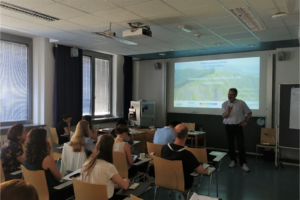
Key input by Thomas Glade regarding systems and multi-hazard risk assessments (photo credit: T. Wenzel)
Imagine experts from across the hazard risk community, sharing their insights. Keynote presentations in the mornings helped to wrap up the complex idea of multi-hazard risks and provide a content base for all participants. Coming together with different cultures, backgrounds, and perspectives, created the need to get everyone on the same page and possibly fill in knowledge gaps. Content ranged from risk assessment and disaster management to systems theories and applied disaster response scenarios, e.g. using serious games.
Group work
Working in five different groups, we brainstormed ideas to develop multi-risk scenarios for selected case study sites including the Alpine Brenner-Corridor, Bucharest, Istanbul, Saint Vincent, and Pakistan, thus covering local, regional, national, and international scales. Working in groups was an opportunity to see theory in practice: We really went through all the stages of team building described by Tuckman’s stages of group development: (Forming) First of all, it was difficult to decide which hazards to focus on. “Only rain or also wind, … but hey, cybercrime could be important too?” We had to simplify our approach and start with just one hazard event that triggers secondary hazards. (Storming) Further, we figured out who in the group was going to take the lead, and literally struggled with decisions, (Norming) but eventually agreed on responsibilities and tasks. One part of the group took on the task of exploring the fastflood tool, which provides rapid calculations of flood inundation, and the RiskChanges application, for analyzing dynamic multi-hazard risk. The other team members worked on impact chains and creating possible future scenarios. (Performing) At the end of the week, we were able to present a clear version of the work we had done during the week and completed our tasks. However, this felt more like the beginning of a future collaboration than the end of the interacting week.
Networking
For many of the young PhD students, this was the first face-to-face meeting. The previous years with COVID-19, but also because of the spatial distribution, made it mostly impossible to get in touch with each other outside the scheduled meetings. What has been missing until now were the unplanned encounters, the personal connections, and of course, the interactions. Who needs emojis when you can exchange ideas during coffee breaks, share laughs between sessions, and create connections that unconsciously shape or create new ideas?
Understanding different perspectives means understanding your colleague’s background. In PARATUS many online lectures provided us with a lot of content. But meeting colleagues face-to-face makes it easier to understand their perspectives and their backgrounds. Our science approaches are diverse but our personal ideas can be worlds apart. It is therefore essential, especially in such an interdisciplinary and international environment, to embrace: tolerance, respect, open-mindedness, and patience. Overall, many of us work in very specific working groups, specialized in our disciplines. Here in Vienna, for example, we work on slow-moving landslides, but also on risk research. Bringing different scientists together allows us to think outside the box and overcome our own systemic perspectives. Therefore, creating a collective way of thinking outside of our comfort zone.
Lessons learned
In summary, it was refreshing to meet so many different people in one place, all focused on a central goal, but at the same time approaching that idea from many different perspectives. A week is great, but much more time is needed to consolidate the spark of ideas. Concluding our summer school: What lessons did we learn about the essentials of a face-to-face meeting?
- Communication is the key: Sharing findings is the key to a resilient society.
- Embrace diversity: Different perspectives are the secret ingredient for problem-solving.
- SpaceTime: Always consider a spatial-temporal scale when working with multi-hazards.
- Keep it simple and short: Complexity doesn’t need to be complicated.
- Learning is a team sport: Together, not alone.
- Coffee breaks matter: Fruitful discussions between the sessions are where new ideas are formed.
The power of in-person gatherings, valuable different viewpoints, and the joy of shared learning are forces that can’t be replicated in the digital realm. Sometimes, it’s worth embarking on the adventure of a face-to-face summer school and that’s why we encourage this for other contexts.
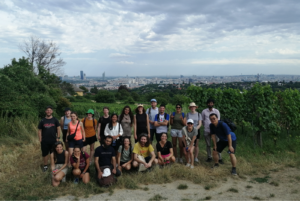
Social program with an excursion around Vienna (photo credit: T. Wenzel)
If you want to know more about the PARATUS project…….
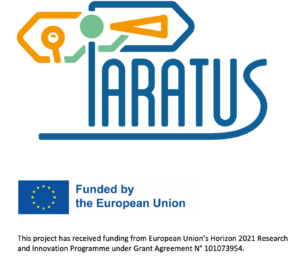
CONTACT US:
CHECK THE PARATUS WEBSITE:
https://www.paratus-project.eu/
FOLLOW PARATUS:
Paratus_EU on Twitter
PARATUS project on LinkedIn
Post edited by Silvia De Angeli and Paulo Hader

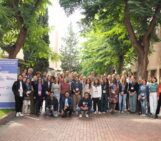
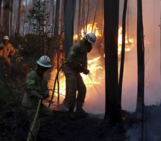
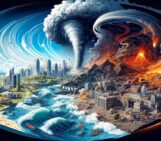
steph
thank you for sharing this for those who could not make it, do we know if the summer school will again run in 2024?